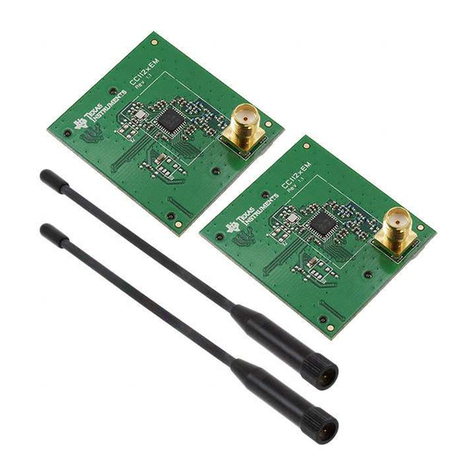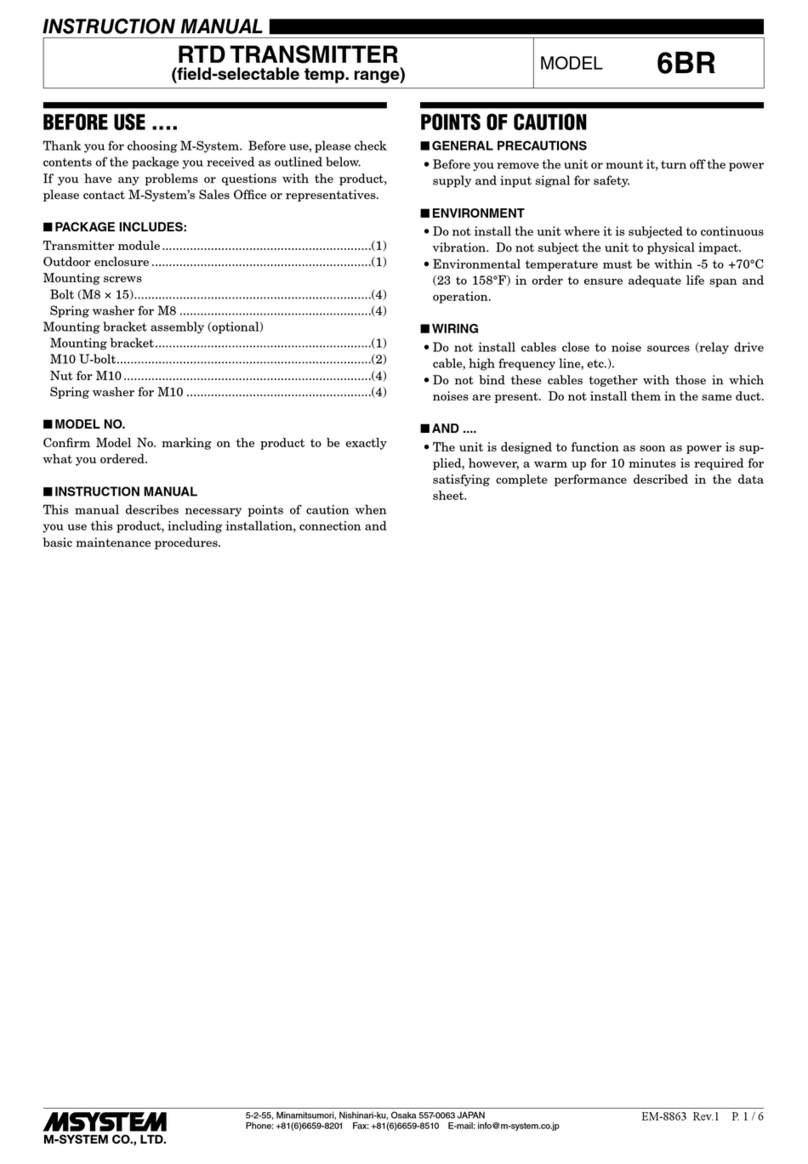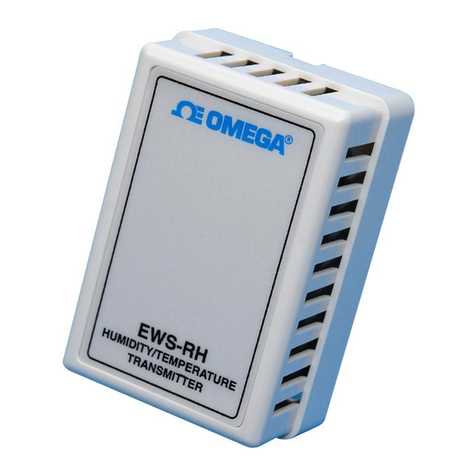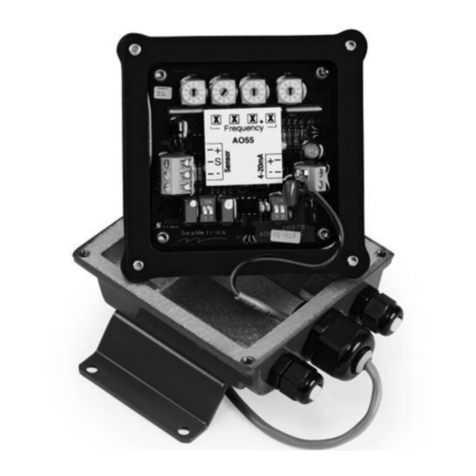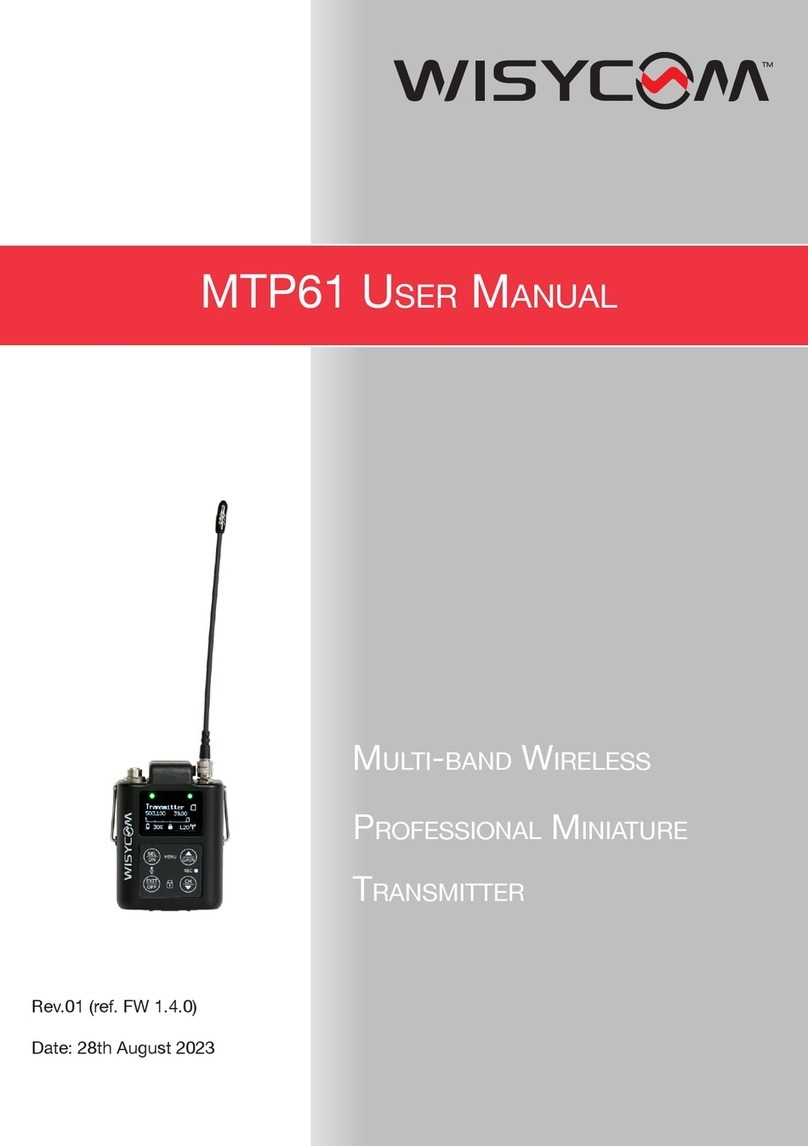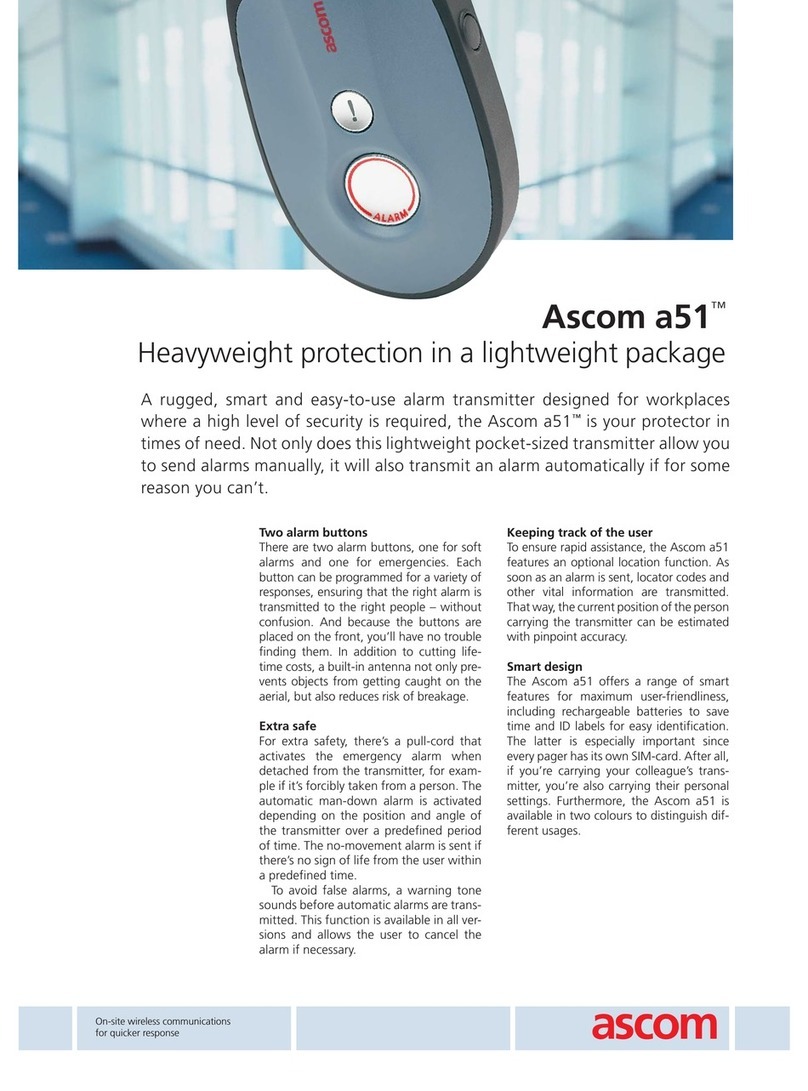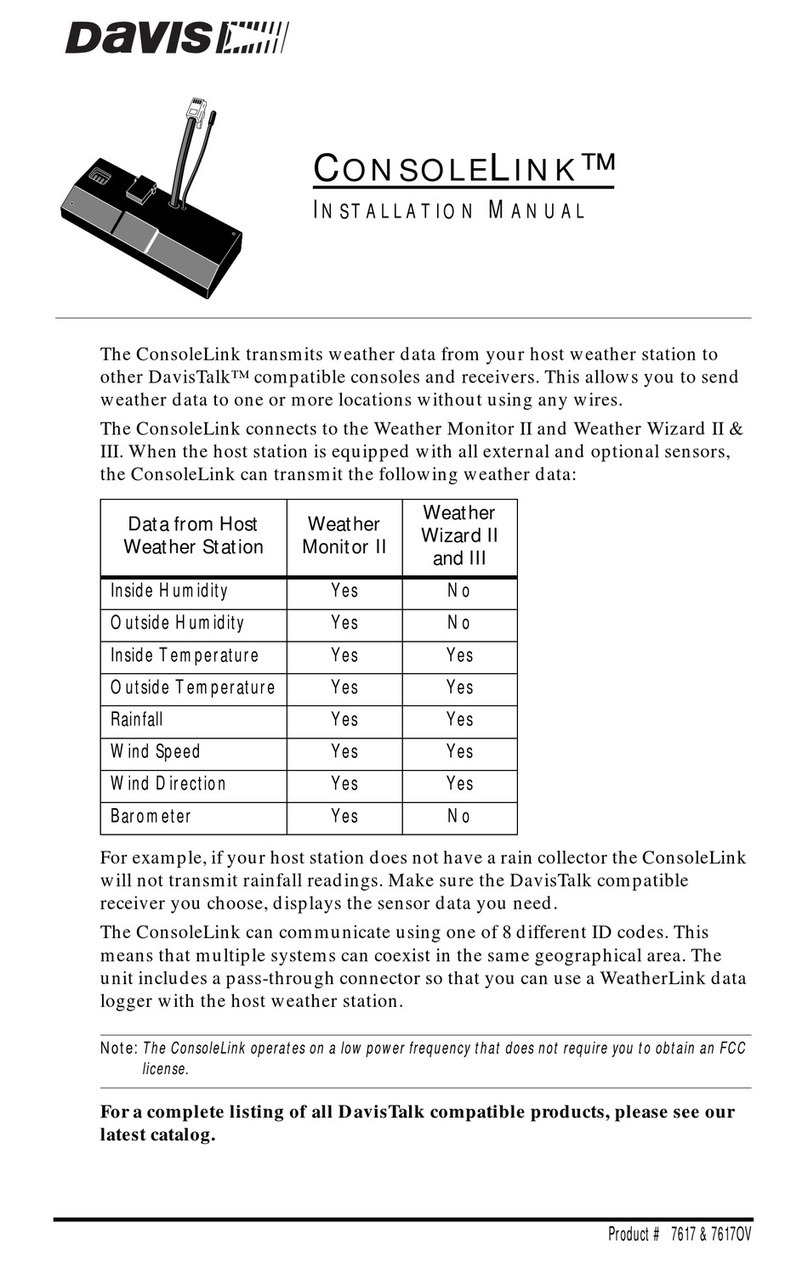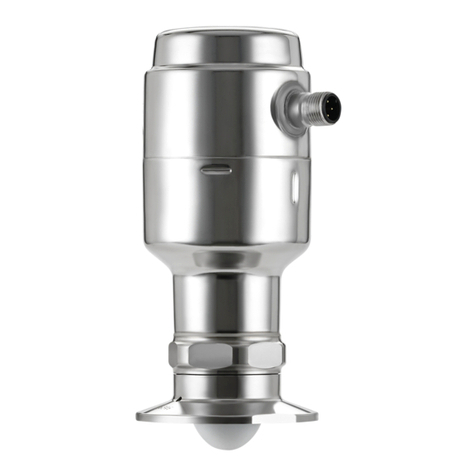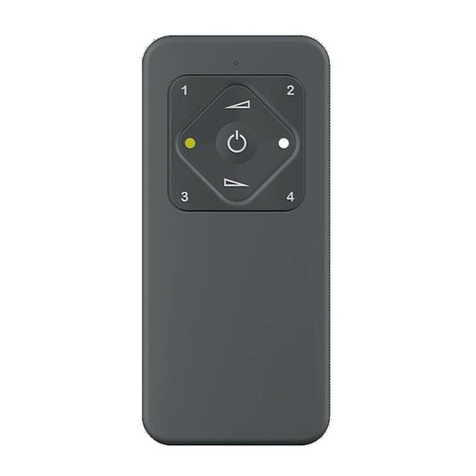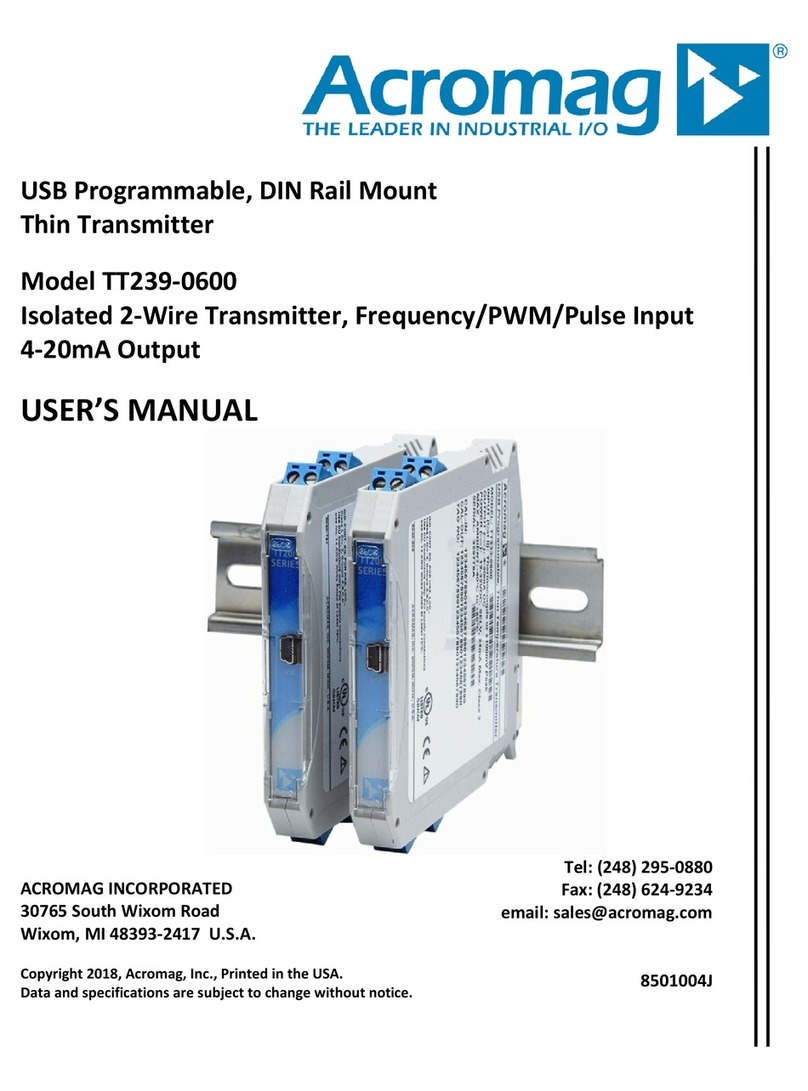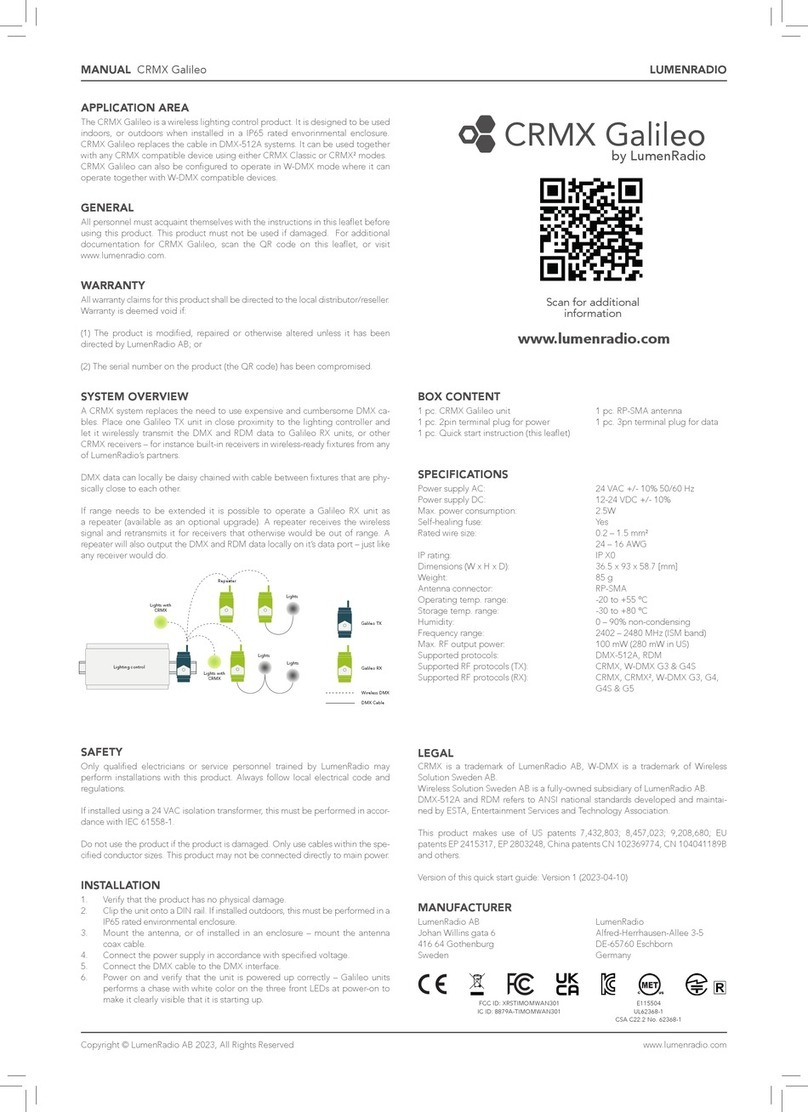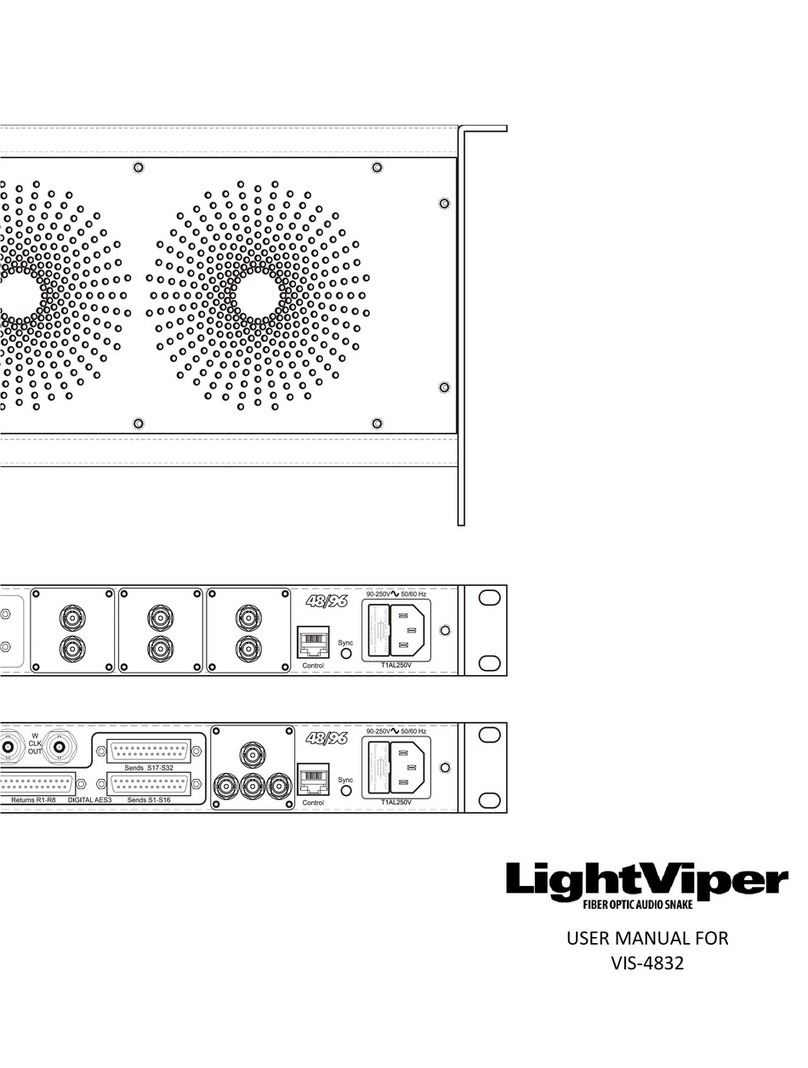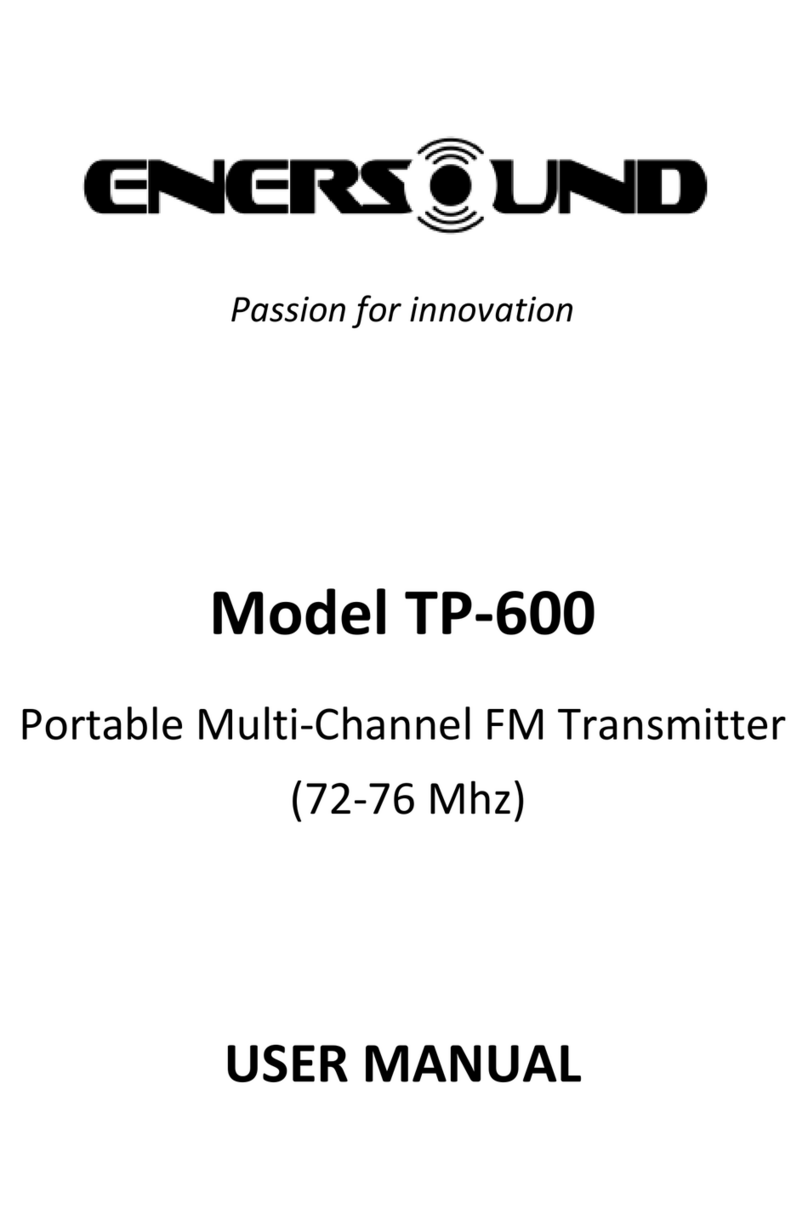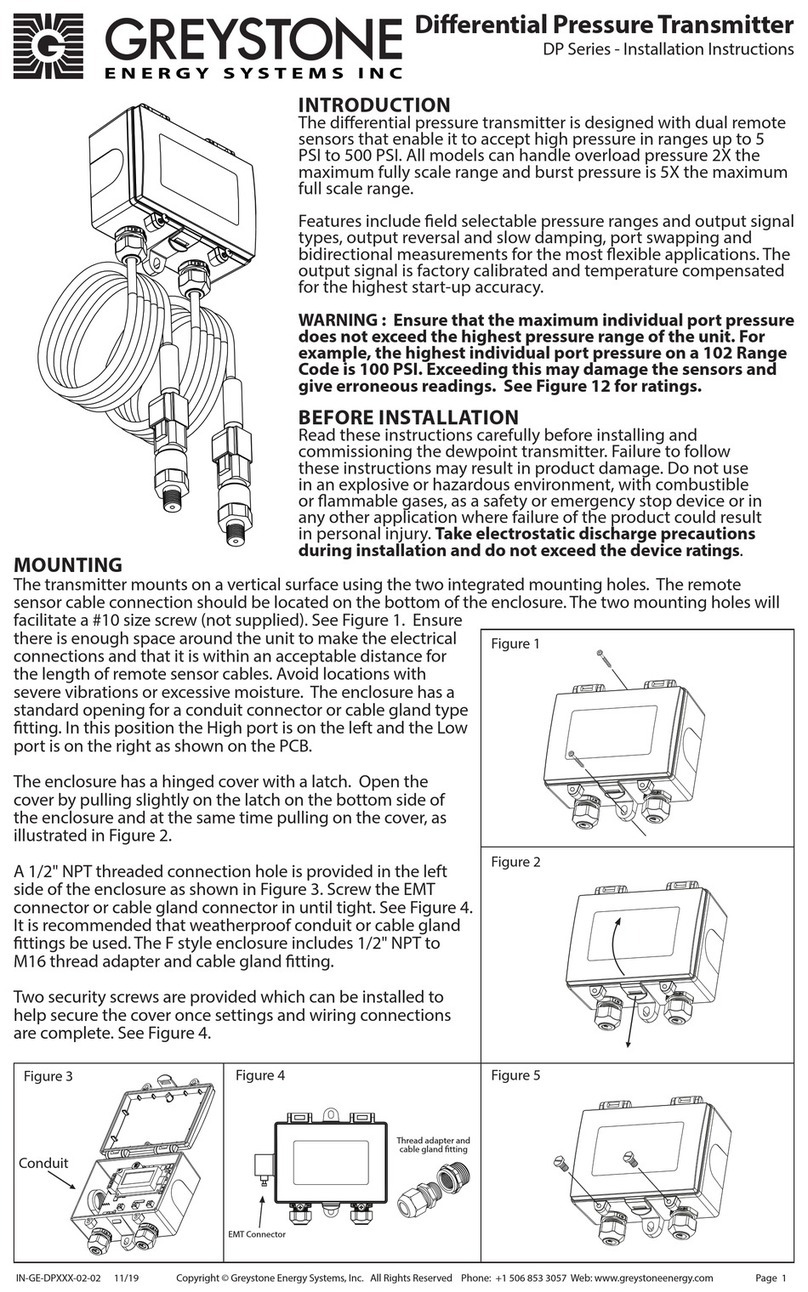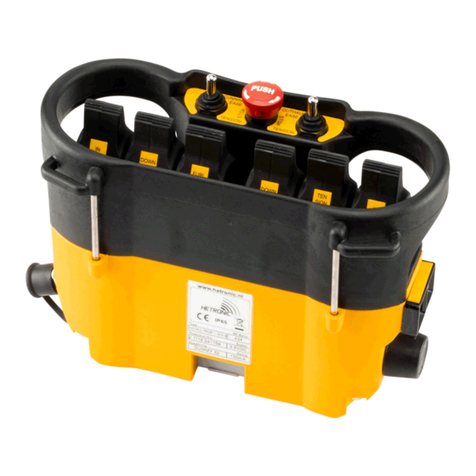Siel EXC-GT Series Operating instructions

Sede Operativa
Via Toscana, 57/59 - 20090 - Buccinasco (MI)
Siel Broadcast S.p.A
Via delle Acacie, 2/4 - 05018 Orvieto (TR) - Italy
C.F.e P. IVA IT 05305970963 Cap.Soc. € 2.040.000,00 Int. Vers. QUALITY SYSTEM
ISO 9001:2001
CERTIFICATE n. 9110.SIBR
THE INTERNATIONAL
CERTIFICATION NETWORK
REGISTRATION n. IT-61344
FM super-compact transmitter series
User and maintenance manual
Version 1.8

EXC-GT – FM super-compact transmitter series
User’s manual – Page 2 of 98
Preliminary notes
We used the utmost care in making a complete manual with detailed, precise, and updated information; however, the contents herein
cannot be regarded as binding towards our company.
SIEL, in their constant commitment to improve the quality of their products, reserve the right to vary the device’s technical features
without prior notice. For updates, please visit our web-site www.siel.com or contact our local dealer or agent.
The manufacturer will not be held responsible for any consequences caused by errors or improper handling and over which he has no
direct control.
The described options may vary from model to model to meet the specific requirements of our customers.
All rights reserved. No part of this document may be reproduced in any form or by any means, including recording or photocopy without
Siel’s prior written authorization.
Via Toscana 57/ 59 - 20090 Buccinasco (Milan) - Italy
Tel +39-02-45713300
Fax +39-02-45713351
E-mail: [email protected]
Web: www.siel.com
For further information about how SIEL ensures compliance with EC regulations, refer to Chap. 3.
This label indicates the express declaration by SIEL that the product associated with this manual conforms to Directive 1999/05/EC.

EXC-GT – FM super-compact transmitter series
User’s manual – Page 3 of 98
Contents
1INTRODUCTION ..........................................................................................................................5
2SAFETY FIRST!...........................................................................................................................6
2.1 Symbols used................................................................................................................................6
2.2 Warnings .......................................................................................................................................6
3SIEL PRODUCTS AND VALUE ADDED............................................................................................7
3.1 Full conformity to EC regulations ..................................................................................................7
3.2 Quality in series manufacturing.....................................................................................................7
3.3 Overdesigning for performance.....................................................................................................7
3.4 Savings on all fronts...................................................................................................................... 7
4IDENTIFYING YOUR MODEL..........................................................................................................8
4.1 Default screen ...............................................................................................................................8
4.2 External cabinet.............................................................................................................................8
5COMMANDS AND INPUTS ............................................................................................................9
5.1 Location of parts............................................................................................................................9
5.2 List of commands and inputs.......................................................................................................14
6INSTALLATION .........................................................................................................................16
6.1 Check the supplied parts.............................................................................................................16
6.2 General safety rules....................................................................................................................16
6.3 Placement of the device..............................................................................................................16
6.4 Wiring the device.........................................................................................................................17
7AUDIO OPERATING MODES AND ASSOCIATED BF CONNECTIONS................................................20
7.1 Mono transmission from a mono signal ......................................................................................20
7.2 Mono transmission from a stereo signal .....................................................................................20
7.3 Stereo transmission from a stereo signal using the internal stereo encoder..............................20
7.4 Monophonic or stereophonic transmission from a multiplex signal.............................................20
7.5 Connection to LEFT, RIGHT, or MPX modulation connectors....................................................20
7.6 Connection to the MPX input.......................................................................................................21
7.7 Changing the input impedance ...................................................................................................21
7.8 Preemphasis ...............................................................................................................................22
7.9 Operating with the RDS and SCA encoders............................................................................... 22
8BASIC OPERATIONS .................................................................................................................23
9MENU AND NAVIGATION COMMANDS.........................................................................................29
9.1 Multifunction knob .......................................................................................................................29
9.2 ESCAPE button...........................................................................................................................29
9.3 Navigating the commands menu................................................................................................. 29
9.4 Additional commands in the SETUP menu.................................................................................30
10 DESCRIPTION OF THE MENUS ...................................................................................................31
10.1 Default screen .............................................................................................................................31
10.2 VIEW menu.................................................................................................................................31
10.3 SETUP menu................................................................................................................................35
10.4 Hidden menus (under level 3 password).....................................................................................45
11 MAINTENANCE AND WARRANTY................................................................................................47
11.1 Maintenance................................................................................................................................47
11.2 Warranty......................................................................................................................................47
12 TROUBLESHOOTING.................................................................................................................48
12.1 Error messages...........................................................................................................................48
13 CIRCUIT DESCRIPTION..............................................................................................................49
14 TECHNICAL FEATURES.............................................................................................................50
15 INDEX......................................................................................................................................51

EXC-GT – FM super-compact transmitter series
User’s manual – Page 4 of 98
16 ELECTRICAL,MECHANICAL DIAGRAMS AND PARTS LOCATION ...................................................52

EXC-GT – FM super-compact transmitter series
User’s manual – Page 5 of 98
1INTRODUCTION
Congratulations on your purchase! The EXC-GT transmitter series is equipped with the most modern technology available, to
provide you with maximum performance at minimal performance cost, while fully conforming to technical regulations. Flexibility,
quality, compactness, and low electrical consumption make the devices in the EXC-GT series the best offered on the market today.
The transmitters in the EXC-GT series are available ranging from 30 W (for common uses, such as an exciter) to 4 KW, ideal for
N+1 systems and as a spare transmitter. These are just a few of the advanced characteristics that make the EXC-GT series truly
unique:
Super-compact size and reduced weight – The most powerful model is so compact that it can be entirely contained within a
standard 19” 4-unit rack.
Low performance costs. The unique design reduces internal loss and allows the device to achieve an extremely high yield –
typically greater than 80% - minimizing electrical consumption and thus decreasing performance costs.
Sturdy modular construction. Reliable modular construction minimizes and facilitates maintenance operations. In addition, it
ensures a greater average time between failures, as well as ease of maintenance.
Easy to use and to configure. All the transceivers use the same control interface, which is equipped with a large LCD screen,
a multifunction knob, and few other buttons. This allows the user to easily set functions on the device, and to view the
operating parameters in the blink of an eye.
Nominal RF output power over the full FM range particularly stable against time. The output power may be varied from a
minimum level and the operating frequency includes the full FM range, without retouching other parameters.
Power section entirely modular and highly reliable. In the high-power versions, the stage of RF amplification is composed
of multiple internal subcompact modules produced from the latest advances in technology and working in perfect synergy.
Thanks to internal balancing circuits, when a failure occurs in one of the modules, the others are automatically rebalanced,
allowing for transmission at reduced power. Each module is easily identifiable, inspected, and removable without the assistance
of a welder, thanks to the reduced number of interconnections achieved using multi-polar connectors.
RF output stage has a reverse intermodulation figure lower than the standard bipolar construction. Low enough to
approach that of tube equipment, due to the MOS-FET design.
Low level of dissipation. The reduction in internal loss and overall elevated yield minimize the dissipation of heat; as a result,
the devices in the EXC-GT Series perform well even in challenging environmental conditions.
Stable, reliable power supply. The entire line of transmitters integrates the use of power sources with active power factor
correction (PCF), as stipulated in recent regulations. As such, impact on the electrical power source is minimal, resulting in
greater reliability over the entire device.
Easy diagnostics and easy-to-read parameters, thanks to a comprehensive metering and alarms section on the LCD
display. All parameters and alarms are easily accessible from remote posts via the remote control input, which allows the user
to change from stand-by to “on air” in a fraction of a second. Upon request, an external controller can be provided for long-
range use of the device from an office or from other service points.
Compliance with the strictest regulations. This device was designed in full compliance with CCIR, FFC, and other strict
international regulations, as well as the recent, strict EC anti-magnetic noise requirements. In addition, this device complies
with EC and ETSI 302.018-2 v 1.1.2.1 (2006-03) standards.
And that’s not all: Siel products provide greater value added and incomparable quality. For further details, refer to Chap. 3.
Please note that the manufacturer, in its continuous attempt to further improve the quality this product, reserves the right to
change its technical features without prior notice.
,Warning! Before initiating operations, it is essential to read this entire manual – with particular reference to Chap. 2 –
in order to avoid damage to objects or people.

EXC-GT – FM super-compact transmitter series
User’s manual – Page 6 of 98
2SAFETY FIRST!
2.1 Symbols used
For quick reference, we used symbols that attract immediate attention, and which simply and efficiently advise and inform the user.
,The symbol of the open hand stresses a description of the highest importance concerning technical assistance,
dangerous situations, safety warnings, advice, and/or information of the highest importance. Where such symbol is
not heeded, serious problems/consequences may arise.
The written notebook represents practical, important advice that we recommend be followed in order to obtain the best possible
performance from the device.
The display messages (menu, options, etc.) are written in this font (Courier New).
Important sentences and words are underlined.
For ease of reference, cross references to sections, chapters, page numbers, diagrams, etc. may be indicated using the 2symbol.
For example: “23.1” means “refer to section 3.1”
2.2 Warnings
,Before connecting or using this device, carefully read all instructions contained in this manual, in the order in which
they are written. Cross references to sections and chapters were created exclusively for ease of use. Keep this
manual in a safe place for future reference.
,IMPORTANT: Improper use or installation of this device could cause serious damage to objects and people alike.
Therefore, it is essential to rely on an installer who has been previously authorized or approved by Siel, or by our local
representative, and that both the user and the installer read the entire manual before carrying out any operation.
,All warnings included in this manual must be strictly followed to avoid damages to both the device and the operator.
Read and follow all instructions indicated on warning labels or affixed to the device and its accessories.
,The EXC-GT Series family of transmitters has characteristics common to all its models. However, each version is
equipped with a different transmission power, and characteristics specific to the series or options that make it unique.
For this reason, it is important to verify the exact model of your device, as explained in detail later in this manual.
,Depending on the model used, the device may be of a weight such as does not permit it to be moved by a single
person and without the proper equipment. In this case, the transmitter should only be moved exclusively with the
proper equipment and having taken the proper precautions. The same is true for various internal parts. In case of
doubt, contact Siel.
,Do not turn on the device without having duly wired and connected it, as explained in Chap. 6.
,Always follow the laws and regulations stipulated regarding the use of broadcast transmitters, as in effect in the
geographical area in which you are operating.
This manual describes in detail the menus that appear on the LCD display: as the software is continually updated, some of the
screens shown in the chapters below may be different than those that appear on your device. In case of doubt, contact Siel.

EXC-GT – FM super-compact transmitter series
User’s manual – Page 7 of 98
3SIEL PRODUCTS AND VALUE ADDED
In this section, you will discover why purchasing Siel products is a wise decision. Siel’s extensive experience in
broadcasting devices is in itself value added, and the company is unequalled in terms of safety, regulatory conformity,
technical support, and a high level of return on your investment. These are not empty words, as you will see below.
3.1 Full conformity to EC regulations
As is well known, broadcast devices must conform to strict regulations in terms of quality, safety, and electromagnetic compatibility.
The latter aspect is of particular importance, as it ensures that the transmitter does not interfere with other devices and that it is not
interfered with. In ensuring electromagnetic compatibility, a number of extremely precise measurements are taken that are often
performed by people using inappropriate or uncertified devices; therefore, any results obtained under such conditions are unreliable.
For example, if a user is not equipped with an extremely expensive, large anechoic room duly certified by a competent body,
measurements may be rendered entirely useless.
Siel is particularly careful about guaranteeing its clients conformity to regulations. To this end, after having taken measurements
during the research phase, Siel uses a certified laboratory and an international certification body (Rasek) to certify the full conformity
of its products based on measurements taken according to regulations.
3.2 Quality in series manufacturing
A famous ad running since the 1980’s guarantees “reliable quality over time”. In order to ensure that each device produced in series
conforms to testing and validation regulations, Siel is ISO 9000 certified.
3.3 Overdesigning for performance
Siel understands that, in order to guarantee extended performance times without servicing, the parts most subject to stress must be
overdesigned. To this end, we have paid particular attention to creating the stages of RF power and the device’s power supplies,
designing them so they can provide and manage power levels much higher than the nominal values indicated in the specifications.
People with experience in this field will gain a full appreciation of this aspect after having read through the entire manual.
3.4 Savings on all fronts
Choosing a product merely because it costs less than another one doesn’t make sense if its performance costs are high. For this
reason, Siel has undertaken to ensure that its products provide maximum return on the investment made in purchasing them. In
particular, the EXC-GT series transmitters are distinguished by the following features:
Savings in electrical consumption – the high yield allows for significant savings in terms of electrical energy consumed. In
terms of the RF power supplied, a smaller electrical bill “reimburses” the user a portion of the purchase cost – month after
month. This may seem insignificant, but if you compare our 4 KW transmitter to the average comparable product available on
the market, the savings in electricity consumption cover the full cost of the device within just over three years.
Economy of space – the exceptional compactness of EXC-GT transmitters significantly reduces bulk, and therefore the rental
on locations in which the transmitters are installed.
Lower transportation costs – the light weight of EXC-GT transmitters also results in lower transportation costs – an aspect
that considerably lowers the total “keys in hand” cost.
Less maintenance – the high energy yield also means less heat dissipation and less wear on components, minimizing service
calls and their associated expenses.

EXC-GT – FM super-compact transmitter series
User’s manual – Page 8 of 98
4IDENTIFYING YOUR MODEL
The EXC-GT Series family of transmitters has characteristics common to all of the models (for example, the command menu, the
primary controls, the primary connection inputs, etc.). However, the range of models is in continual evolution, and each model is
distinguished by a different transmission power and by characteristics specific to the series, or by optional characteristics that make
it unique. For this reason, it is important to verify the exact model of your device as follows.
4.1 Default screen
When the device is turned on, the screen that appears indicates your model number, as in the following example:
As you will note, the exact model number of the device appears immediately following Model: and is immediately identifiable as
EXC30GT. For further details regarding the main screen, see 210.1.
,In order to avoid misunderstandings when reading the user manual, it is important to confirm the exact model of your
device, as indicated on the main screen, and to remember this model number.
4.2 External cabinet
Each model, according to its power level and other factors, may be produced in a specific 19” cabinet rack, which may have different
commands and inputs arranged differently than on other models. To avoid misunderstandings regarding the location of these parts,
refer to the following chapter, which illustrates the commands and inputs for each version.

EXC-GT – FM super-compact transmitter series
User’s manual – Page 9 of 98
5COMMANDS AND INPUTS
The primary commands and connections for the EXC-GT Series are common to all the models. However, each version has been
created with a different unit rack and may be equipped with different functions and connections. This section allows you to identify
your device and the locations of its available commands and inputs.
,In order to avoid misunderstandings when reading the user manual, it is important to confirm the exact model number
of your device, as indicated on the main screen, and to remember this model number (2Chap. 4).
5.1 Location of parts
To identify the various parts of the transmitters according to the cabinet (in a 19” rack) on which they are mounted, refer to the image
corresponding to your device, and to the numbered list in section 5.2.
5.1.a Model 1
Front
Rear
22
1
10
12 15
5 9
7 23
6
22 20
21
17
16
18
19
118

EXC-GT – FM super-compact transmitter series
User’s manual – Page 10 of 98
5.1.b Model 2
Front
Rear
2
2 3
1
15
5
8 13
22
21
17
16
18
196 10
9
11 20
25
7
24

EXC-GT – FM super-compact transmitter series
User’s manual – Page 11 of 98
5.1.c Model 3
Front
Rear
1
2
4
23
10
14
15 18
16
22
25
19 17
9 217 5
8
13

EXC-GT – FM super-compact transmitter series
User’s manual – Page 12 of 98
5.1.d Model 4
Front
Rear
10
14
15 18
16
9
5
25 17
2124
8
13 7 2220
19
1
2
4
23

EXC-GT – FM super-compact transmitter series
User’s manual – Page 13 of 98
5.1.e Model 5
Front
Rear
16
147 14 108
215 1822 15 17 199
20
24 25
1
22 3
4

EXC-GT – FM super-compact transmitter series
User’s manual – Page 14 of 98
5.2 List of commands and inputs
The commands and inputs that, according to your model, may be available on the device are listed below:
[1] Control panel – allows the user to set device functions, and to view and set operating parameters. It is composed of the
following:
Liquid crystal display (LCD) – a graphics display that shows the operating parameters and functions selected via the multi-
function knob.
ALARM indicator light (red) – this LED lights up in red if an alarm event occurs (e.g., output power or modulation too low).
LIMITER indicator light (red) – this LED lights up in red to indicate that the maximum deviation limiter has activated due to an
audio signal that is too high.
ON indicator light (yellow/green) – this LED lights up two ways:
It lights up in yellow when the device is on stand-by
It lights up in green when the device is in operation (powered up).
LOCK indicator light (green) – this LED lights up in green to indicate that the internal frequency synthesizer is locked on the
set operating frequency.
Multifunction knob (encoder) – allows the user to navigate the command menu in various ways:
If turned – selects the various functions/operations for the device, or the parameter values to be set.
If briefly pressed (like a button) when inside a menu – activates the option currently selected.
ESCAPE button – while navigating through a menu, pressing this button will return the user to the previous level.
ON/STAND-BY button – starts the device or puts it on stand-by.
For further information regarding the use of navigation commands in the menu, see
2
9.2.
[2] Handles – allow the user to easily pick up the device to remove it from or insert it into a mobile rack.
[3] Front ventilation grill (only on some models) – allows the device to draw in cool air.
[4] Anterior RF MONITOR ouput (only on some models) – BNC-type connector for sourcing the low level RF signal; this function
is useful for connecting to external measurement units. The output level, depending on your model, ranges from 0 dBm to +15
dBm.
RF MONITOR output does not guarantee an output level that is perfectly constant as the frequency varies; as such, it cannot
be used for precision spectrum measurements.
[5] General power switch (POWER ON) – allows the user to turn the general system power on and off.
[6] Fuse holder (only on some models) – protective fuse holder for the power supply socket.
[7] Power socket or cable – used to connect to a mains supply.
[8] Ground – used to ground the device, to ensure safe operation.
[9] Remote control antenna – input for an external GSM antenna (to be connected if the device is equipped with a remote control
option via the cellular phone network).
[10] Antenna output socket/flange (RF OUTPUT) – this socket/flange is connected to an FM broadcasting antenna that can
tolerate the transmitter’s nominal power.
[11] Posterior RF MONITOR input (only on some models) – BNC-type connector for sourcing the low level RF signal. The signal
attenuation is 57 dB.
[12] Heatsink (only on some models) – for dissipation of excess temperature during the transmitter power stages.
[13] Ventilation grill (only on some models) – for heat dissipation or, for models with forced air circulation, for expelling air brought
in through the front ventilation grill to cool the device.
[14] Cooling fan (only on some models) – expels air sucked in through the front ventilation grill used to cool the device.
[15] MODULATION MONITOR socket – BF modulation output socket to be used as a monitor, for synchronization of the RDS
encoder, or broadcast retransmission (BNC-type connector).

EXC-GT – FM super-compact transmitter series
User’s manual – Page 15 of 98
[16] AUX – auxiliary modulating channel input (RDS/SCA) at low frequency on a 20-100 KHz band (BNC-type unbalanced
connector with grounding shield) for connection to an RDS encoder. For details, see 27.9.
[17] MPX – externally created broadband stereo composite modulating signal input (BNC-type unbalanced connector with
grounding shield). For details, see 27.5.
[18] RS232 serial programming port – this female RS 232 Sub-D9 port with inverted cable allows the user to control the
transmitter via a computer or an external point-to-point control device. For details, see 26.4.d.
[19] REMOTE control input – this 9-pin SUBD connector allows the user to remotely control the device or to perform other
functions via a suitable interface. For connections to this input, see chapter 16. For details, see 26.4.e.
[20] AES/EBU (only on some models) – input for AES/EBU digital standard.
[21] LEFT – balanced input (female XLR) for modulation of the left audio channel. For details, see 27.5.
[22] RIGHT – balanced input (female XLR) for modulation of the right audio channel. This input can also accept a mono signal for
monophonic transmissions, as explained in Chap. 7.
[23] N 1 CONTROL (only on some models) – 9-pin SUBD input for remote control. For connections to this input, see Chap. 16.
[24] RS485 serial port (only on some models) – this RS 485 serial port allows the user to connect multiple transmitters in series,
each of which is identified via a previously assigned logical address.
[25] 10/100 T (only on some models) – input for LAN connection using 10/100 Base-TX standard Ethernet.
The central BNC pin of the MPX input [17] is physically parallel to the + signal (pin 3) on the RIGHT XLR input for the right
channel [22]. As such, the connectors cannot both be used at the same time.

EXC-GT – FM super-compact transmitter series
User’s manual – Page 16 of 98
6INSTALLATION
,Warning! To ensure safe performance, it is absolutely essential that all the instructions outlined in this chapter be
complied with.
6.1 Check the supplied parts
Before using your transmitter, ensure that the following parts are included in the package:
The transmitter
The user manual
A power cable supplied with a suitable connector
If any parts or missing or damaged, contact your supplier at once.
6.2 General safety rules
,Warning! In order to prevent serious damage to objects or people, the following rules must be strictly followed.
Although no special instruments are required in most cases, the device should be installed by skilled personnel only. To make
best use of the device and prevent damage to the unit, it is necessary to comply with the instructions outlined in this manual.
Should doubts or technical problems arise during the installation procedure, it is strongly recommended that you contact SIEL
or a local agent/dealer.
Should technical problems or doubts of any kind arise during installation, SIEL would be happy to provide qualified technical
assistance. Technical intervention by personnel not authorized by Siel should not be performed.
As a rule, the user should not access the inside of the device. Tampering with the factory settings renders our warranty null and
void, and may also affect the device’s performance, causing costly damage.
No adjustments or internal calibrations are required for normal operations. The device must be properly grounded and must be
used with all the covers closed in order to prevent electrical shocks and to fully comply with EC, EMI, and other safety
regulations.
Never touch the inside of the device without first disconnecting it from the mains. AC, DC, and radiofrequency voltages are
present inside the device and can be dangerous when the covers are removed.
Do not operate the device without the covers properly screwed into place. Using an open transmitter may be dangerous to
objects or people. In addition, if the top cover is removed, this may cause the device or other electronic measurement
instrument to perform incorrectly due to the elevated RF fields.
6.3 Placement of the device
6.3.a Choosing the proper room and placement
Install the device in a dry, sheltered, well-ventilated room away from dust, moisture, insects, and rodents (mice).
Room size should be such that the device can be placed in an upright position, and that technical personnel can easily perform
routine or extraordinary maintenance. Evaluate the minimum size according to the power supplied by your model, taking into
account that a volume of 2.5 x 2.2 m in height is required for a transmitter with 1 KW of power, and that no other transmission
or auxiliary devices should be present in the vicinity.
Place the apparatus as close as possible to the antenna, in order to prevent excessive power loss in the cables. If this is not
feasible, use antenna cables with low loss and suitable cross-section.
Vents in the walls and any other openings must be fitted with metal gratings to keep rodents and insects out, and must be
equipped with a dust filter. Make absolutely sure that no water can seep through the vents, the air exhaust duct, or the antenna-
cable grommet. Also confirm that the floor is not at risk of flooding during heavy rainfall.
6.3.b Climatic conditions
In order to achieve optimum performance in terms of power, life span, etc., the ideal room temperature should range between
5°C and +25°C. As a general rule, the useful life span of the device may be halved by a 10°C increase in room temperature,
should the temperature exceed 30°C. The pre-set over-temperature alarm will activate when the limit of 45°C is exceeded. It is
advisable to hang a minimum/maximum thermometer on the wall to indicate variations in temperature.
The room must be ventilated to ensure that the temperature never exceeds 35°C. Such conditions can NOT generally be met
when the exhaust cooling air is not pushed outside and is instead fed back into the room. This is also occur if more than one
device is installed in the same location. An efficient ventilation system with air exchange is thus required in the room. For your

EXC-GT – FM super-compact transmitter series
User’s manual – Page 17 of 98
reference, the air flow rate required for proper functioning of a 1 KW transmitter must be at least 500 cubic meters per hour.
Evaluate this element in proportion to the power supplied by the model you are installing.
If the device is placed on a rack, the rear door of the rack can not usually be secured. If the system must be completely
enclosed, a ventilation and air removal system must be created. To encourage air flow, a flange can be installed at the
ventilation outflow, to which a hot air discharge conduit can be connected to the exterior. In this case, it is important to
remember that the transmitter’s internal fans are low pressure units and that it is fundamental for an exhaust fan to be installed
on the air discharge conduit.
The best solution is to keep the room at 20-25°C. Thermal insulation and effective ventilation via a fan controlled by a
thermostat generally present the most advantageous solution.
Excessive concentrations of moisture and/or dust in the air or in the room may cause a condensation build-up in the
transmitter. If the system is periodically switched on and off, this can trigger destructive electric arcs and short circuits, and thus
cause damage that is not covered by warranty.
6.3.c Electrical conditions
The mains capacity must be proportionately designed to adequately support the device’s power consumption (including a
sufficient safety margin).
The power supply nominal range comes from 185 to 265 VAC (nominal voltage single-phase 230 VAC). Upon request, some
power models are available with a 400 VAC three-phase power supply.
Mains fluctuations and electrical discharges due to weather or nearby industrial machinery may cause significant trouble,
especially in mountain areas and in locations close to industrial areas.
In such cases, it is advisable, if not indispensable, to install a protector, an insulating transformer, or possibly an
electromechanical mains voltage regulator. Upon request, SIEL can provide all of these accessories.
Even though the mains regulator allows for a wide incoming voltage range, it is important to avoid operating using high
impedance mains lines in proximity to the lowest permitted AC limit: if the line falls below a given value while fully loaded, the
control circuit for the lowest AC limit may trigger a very dangerous oscillating on/off cycle. In such cases, we recommend using
a stabilizer on the external line.
Since the total cost of the system, inclusive of broadcasting equipment, antenna system, and installation, is rather high, a
certain percentage of the budget should be set aside for purchasing and installing suitable protection and conditioning facilities.
Depending on the location, the percentage of the total cost should be approximately 10-20% of the total amount. However,
such additional costs will be amortized very quickly since the device operates under ideal conditions; as such, its useful life will
increase and, in particular, the incidence of accidental breakdowns due to ambient or mains trouble will be reduced.
6.4 Wiring the device
This section describes the minimum connections required to place the transmitter in operation.
6.4.a Wiring into the antenna
Connect the RF OUT connector (2par. 5.2 ref. [10]) to the antenna or to the next RF amplifier via a high-quality 50 Ohm shielded
coaxial cable equipped with the appropriate connectors.
It is indispensable that only low-loss cables be used when connecting directly to the antenna: in such cases, Celflex or another
similar ½" cable is recommended. Larger cables must be connected using flexible terminal ends from the smallest section, in order
to avoid mechanical stress on the output connector.
,It is very important to ensure that the antenna, cables, and connectors have the correct impedance and are
appropriate to the transmitter’s nominal power level.
,The antenna must be suitable for FM broadcasting and able to resonate at the operating frequency with the minimum
possible SWR.
,The antenna must be grounded via a copper braid of suitable cross-section to prevent lightening or static electricity
from reaching the amplifier through the antenna cable.
6.4.b Connection to modulation signals
Connect the LEFT [21] and RIGHT [22] modulation inputs, or the MPX input [17] alternatively, based on your desired operating
mode (monophonic or stereophonic) and the type of source being used (mono, stereo, or multiplex signal); refer to the information
provided in Chap. 7.

EXC-GT – FM super-compact transmitter series
User’s manual – Page 18 of 98
,The MPX connector is internally connected in parallel to the RIGHT connector. As such, if the MPX connector is in
use, the simultaneous connection of signals to the LEFT and RIGHT connectors is not possible. Again in this case, the
highest impedance position is 5 KOhm.
Connection to the auxiliary RDS/SCA modulation signal is described further ahead, in section 6.4.d.
6.4.c Wiring into the mains
1) Verify that the rear power switch is turned off; if it is not off, do so now.
2) Ground the system.
3) According to your model, connect the power cable or the device’s cable to a suitable single-phase input (230VAC nominal
voltage).
,Before connecting the power, ensure that it is appropriate and is able to support the consumption required by the
transmitter model you intend to use.
,The power supplied by the mains input must satisfy the requirements outlined in section 6.3.c.
,Your transmitter should not be used when near the lower voltage limit with high-impedance lines: if the line voltage
falls below a certain limit at full load, the low voltage sensor circuit could trigger a continuous, extremely dangerous
on/off cycle. In such case, install an external voltage stabilizer.
,In order to ensure proper operation and comply with safety regulations, proper grounding is required. Use the
yellow/green lead in the power cable. The cable neutral lead is blue. Never connect the earth to the mains neutral lead.
,Use only the power supply cable supplied with the transmitter. For cable extensions, sections of sufficient and
appropriate length are recommended.
,Never turn the device on without an antenna connection, even when in stand-by.
6.4.d Connection to the auxiliary modulation (optional)
Where necessary, an auxiliary RDS or SCA modulation source can be connected to the AUX input [16]; refer to the instructions
outlined in Chap. 7.
6.4.e Parallel port for remote control (optional)
Where necessary, connections can be made to the REMOTE parallel port [19]. Various lines are located in this port for simple, direct
control of the transmitter via a male DB9 connector.
Connection of the pins is outlined in the following table:
N. Connection Notes
1, 5, and
8 ground
2 “on the air” signal + 12V with 10 KOhm indicates that the transmitter provides considerable RF power, but not
necessarily the correct level
3 direct power A signal proportional to the direct power is present and is of a pseudo-quadratic type proportion.
The variation field ranges between 0-5Vdc with an impedance of 1 KOhm. On the 1 KW 5V model,
this equals 1500W
6 disable RF This line’s grounding deactivates the RF output. The maximum signal level is approximately +
10V/1mA
7 alarm A low logic signal indicates an alarm. Normal function is indicated by the presence of + 12V on
10kohm. The maximum absorption capacity for the external current is limited to 10mA
6.4.f Connection to the RS232 port (optional)
Where necessary, connections can be made to the RS232 port [18]. This port manages Tx, Rx, and related return data signals via a
RS232 standard without any “handshake” signal.
The above signals are inversely connected to the port; as such, a simple pin-to-pin type serial cable is sufficient, directly connected

EXC-GT – FM super-compact transmitter series
User’s manual – Page 19 of 98
to suitable connectors, usually a female DB9 or DB25 on the PC port and a male DB9 connector to the transmitter. The applicable
communication software is also required.
,Never connect the cable if the PC or transmitter are turned on.

EXC-GT – FM super-compact transmitter series
User’s manual – Page 20 of 98
7AUDIO OPERATING MODES AND ASSOCIATED BF CONNECTIONS
This section describes how to select the various available operating modes, and how to make audio connections according to your
requirements.
The transmitter is equipped with numerous characteristics specific to high-fidelity systems; as such, it should be connected to
modulating signals with the same care as a Hi-Fi system, avoiding ground loops as much as possible. Under these conditions, you
will obtain optimal performance.
According to the operating mode and type of modulation source available, you can connect to the modulation inputs in various ways:
Monophonic transmission from an audio signal, via the main mono channel
Monophonic transmission from a stereophonic audio signal, using the internal stereo encoder
Stereophonic transmission from a stereophonic audio signal, using the internal stereo encoder
Monophonic or stereophonic transmission from an external encoder or radio link receiver.
The device is also able to transmit an auxiliary signal (RDS or SCA), connected to the rear AUX input as described below.
7.1 Mono transmission from a mono signal
1) Connect the RIGHT connector [22] to the monophonic audio signal. Connection to the LEFT input is not necessary.
2) Using the SETUP menu, set the modulation mode to Mono (2section 10.3.f).
3) Confirm or change preemphasis according to the local standard.
7.2 Mono transmission from a stereo signal
1) Connect the RIGHT connector [22] to the right audio channel.
2) Connect the LEFT connector [21] to the left audio channel.
3) Using the SETUP menu, set the modulation mode to Mono L+R (2section 10.3.f).
4) Confirm or change preemphasis according to the local standard.
7.3 Stereo transmission from a stereo signal using the internal stereo encoder
Follow the steps outlined in section 6.5.b, ensuring that Stereo is selected at step 3.
7.4 Monophonic or stereophonic transmission from a multiplex signal
If you wish to use a multiplex signal (MPX) originating, for example, from an external encoder or a radio link receiver, follow the
steps below:
1) Connect the multiplex signal to the MPX connector [17]. The multiplex signal is already preemphasized; as such, using the
MPX input, the filtering and stereo encoding stages are skipped and the signal will not be further preemphasized.
2) Using the SETUP menu, set the modulation mode to Mpx (2section 10.3.f).
Selecting the preemphasis according to the local standard (50 microseconds in Italy) is not required, as it is irrelevant in this
mode. However, it is recommended that this be done anyway.
If the length of the cable delivering the signal to the MPX connector is only a few meters long, a 50 Ohm (RG58) cable can be
used. If the distance is greater, a 75 Ohm (RG59) or 92 Ohm (RG62) cable should be used.
7.5 Connection to LEFT, RIGHT, or MPX modulation connectors
The EXC-GT Series supports both balanced and unbalanced audio signals according to the connection that is made in the three
LEFT and RIGHT XLR connector contacts. The input impedance for these contacts is pre-set at the factory at 10 KOhm resistivity (5
KOhm for unbalanced connections), which can be decreased to 600 Ohm if necessary, as explained further ahead.
Normally, an XLR audio input with balanced connection is used for connection to the balanced output of a professional mixer.
Alternatively, an unbalanced connection can be used, and is useful for output connections on inexpensive devices, without a
perceptible degradation in the audio signal.
Alternatively to connection to the LEFT e RIGHT connectors, an externally created multiplex signal can be connected to the MPX
connector. In this case, connection should not be made to the LEFT and RIGHT connectors.
Table of contents
